What Norwegians can teach us about loving winter
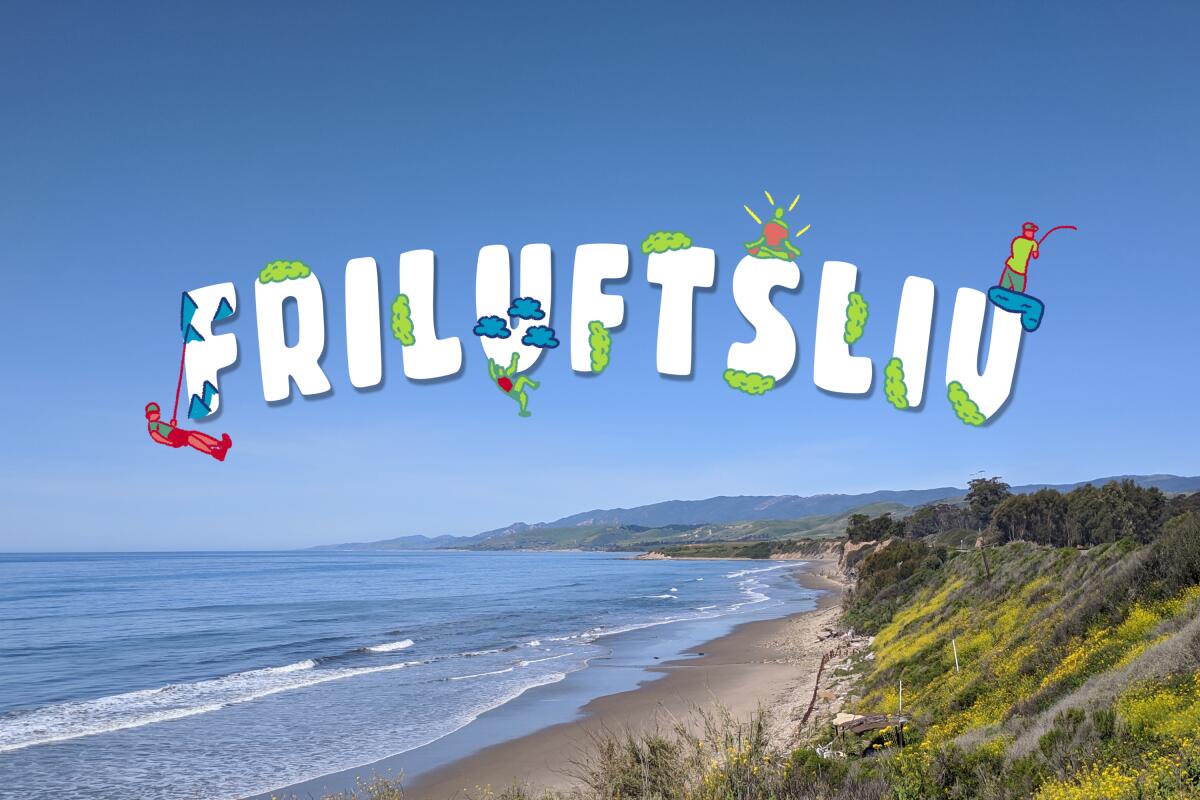
By Mary Forgione
Design and illustrations by Micah Fluellen
Sign up here to get The Wild sent weekly to your inbox.
Winter is coming. Some of you (me too) may have missed out on hygge, the Danish phenomenon that links coziness at home to a serene and balanced life. That’s a lot to unpack in such a small word. But even with the promise of living a contented life, I never felt the urge to embrace hygge and hunker down inside. I was always anxious to get outdoors.
Which is why I’m falling in love with this Norwegian word I can’t pronounce: friluftsliv. Translations point to “open-air living.” It’s not new and I’ll spare you the origin, but it is gaining momentum and may help with the pandemic blahs as we charge toward winter.
Outdoor Journal describes friluftsliv as a no-frills endeavor: “All that is needed to experience this blissful state is to be in the context of nature.” That’s right, you don’t have to scale the Matterhorn or swim to Alcatraz. You just must be mindful to reap the healing, serenity and calmness that come with doing something, or nothing, outdoors.
Norsk Friluftsliv, according to National Geographic, is an organization that represents 5,000 outdoors groups dedicated to the concept. One thing worries me: The 1 million Instagram posts with #friluftsliv show wintry, chilly, rugged, outdoorsy scenes. Huh. Can I can still embrace a friluftsliv-rich winter amid boulders in the desert or on a SoCal beach? If only I knew how to ask that in Norwegian.
3 things to do this week
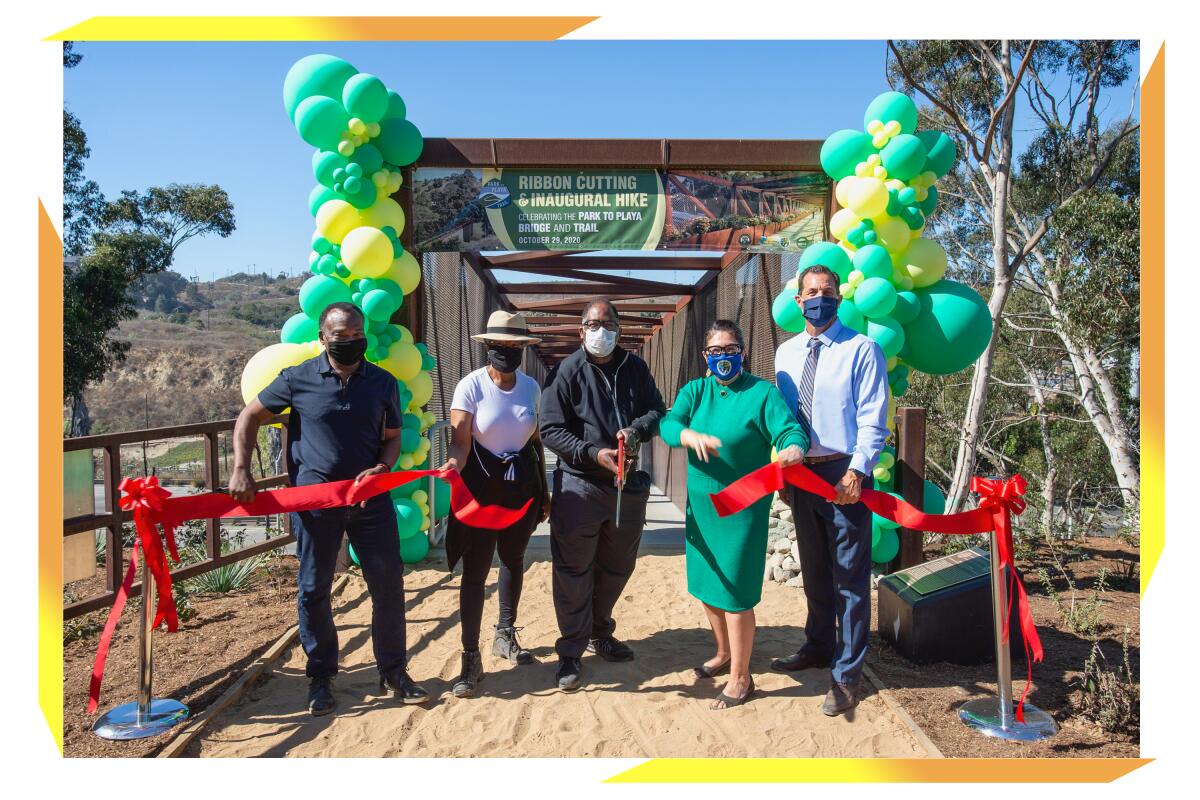
1. Walk all or part of L.A.’s newly completed Park to Playa Trail. Urban trails can help us reimagine our city in new ways. During COVID-19, they’re essential to keeping us outdoors and close to home. Put the Park to Playa Trail on your to-do list. Part of the 13-mile flat route has been open, but the last bit — a bridge spanning La Cienega Boulevard — was completed last week. Park to Playa is also the first regional trail through South Los Angeles, something outgoing L.A. County Supervisor Mark Ridley Thomas takes pride in. The route connects the Baldwin Hills parklands to the Pacific Ocean by way of the Stocker Corridor, Kenneth Hahn State Recreation Area, Stoneview Nature Center, the Baldwin Hills Scenic Overlook and Ballona Creek Bike Path. Here’s the route.
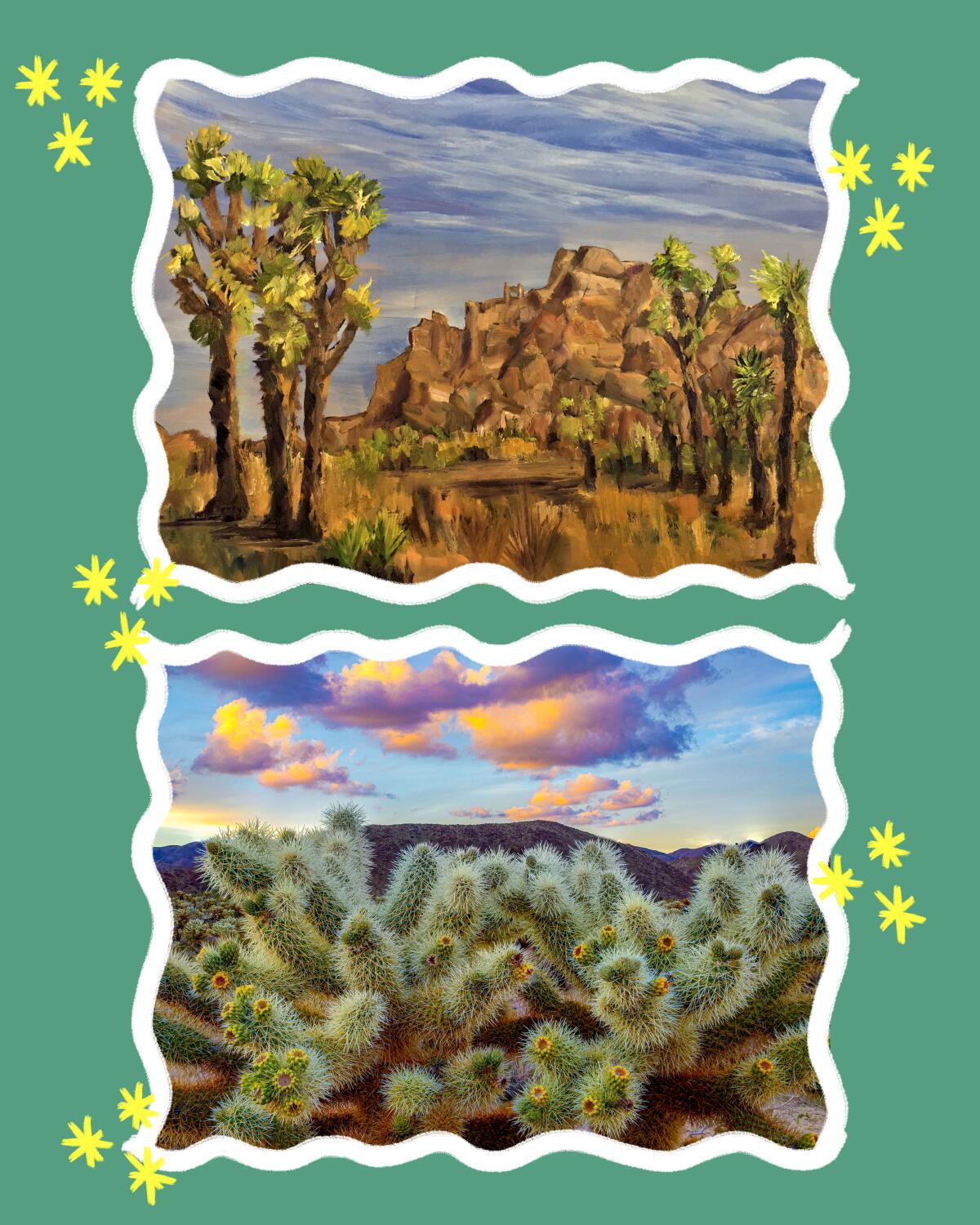
2. Meet artists and see artworks inspired by Joshua Tree National Park. National parks inspire us to move, climb, ride and hike. They also inspire artists to create works. The annual Art Exposition at Joshua Tree National Park opens Saturday with 60 park-centric works of art, from photos and oil paintings to wood-block prints, solar plate etchings and a cotton quilt featuring a Joshua tree photo.
You can attend art demonstrations and art talks outdoors Saturday and Sunday at the 29 Palms Art Gallery (with COVID-19 rules in place) in Twentynine Palms, then squeeze in a half-mile hike from the gallery to the park on the Oasis of Mara nature trail. Admission and events are free; artworks are for sale. If you miss the opening, the exhibition continues through Nov. 29. More details here.
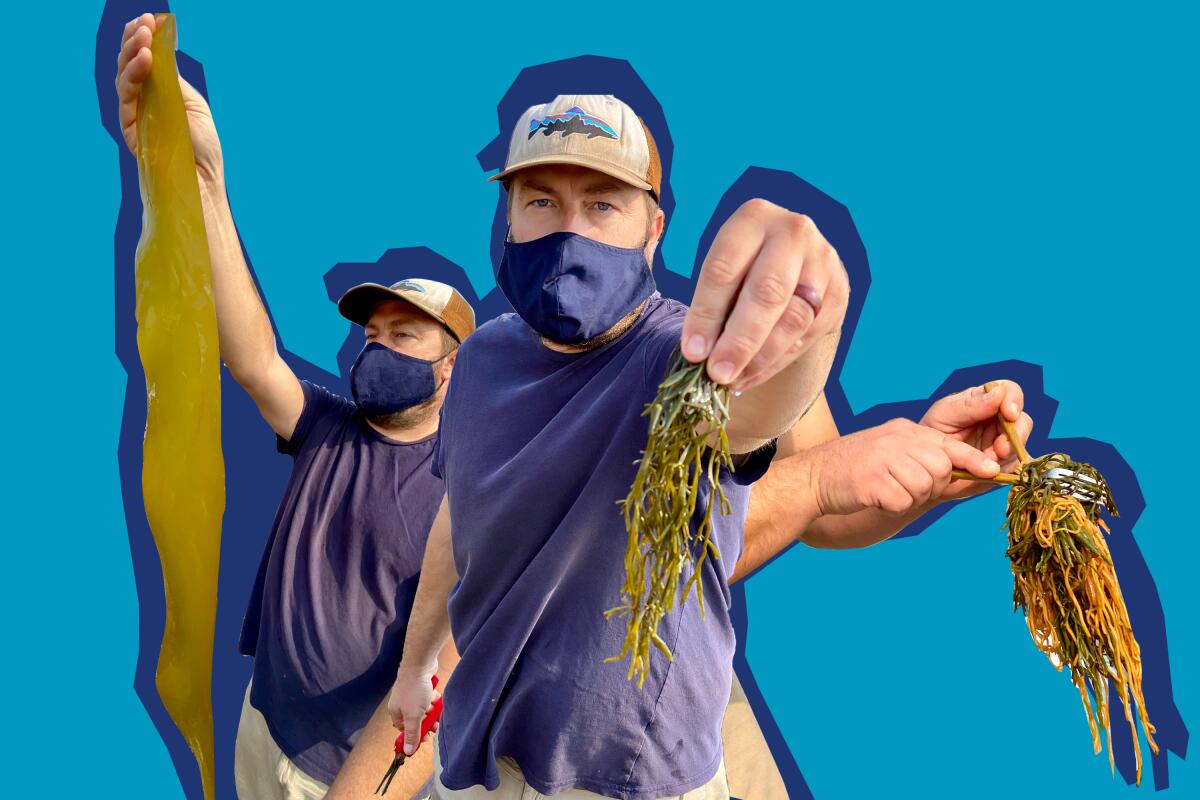
3. Forage for edibles and even a meal along the beach or on trails. Do not do this without a pro! Knowledgeable foragers in California take people like me (who know nothing) on hikes and beach walks to teach them about local plants and what you can and can’t eat. They also show you how to prepare your finds. Spencer Marley in the coastal town of Cayucos shows visitors how to gather seaweed and treats them to a bowl of ramen on the beach afterward. Closer to home, Lanny Kaufer and author-survivalist Christopher Nyerges lead herb walks in Ojai and other parts of Southern California.
Wild things
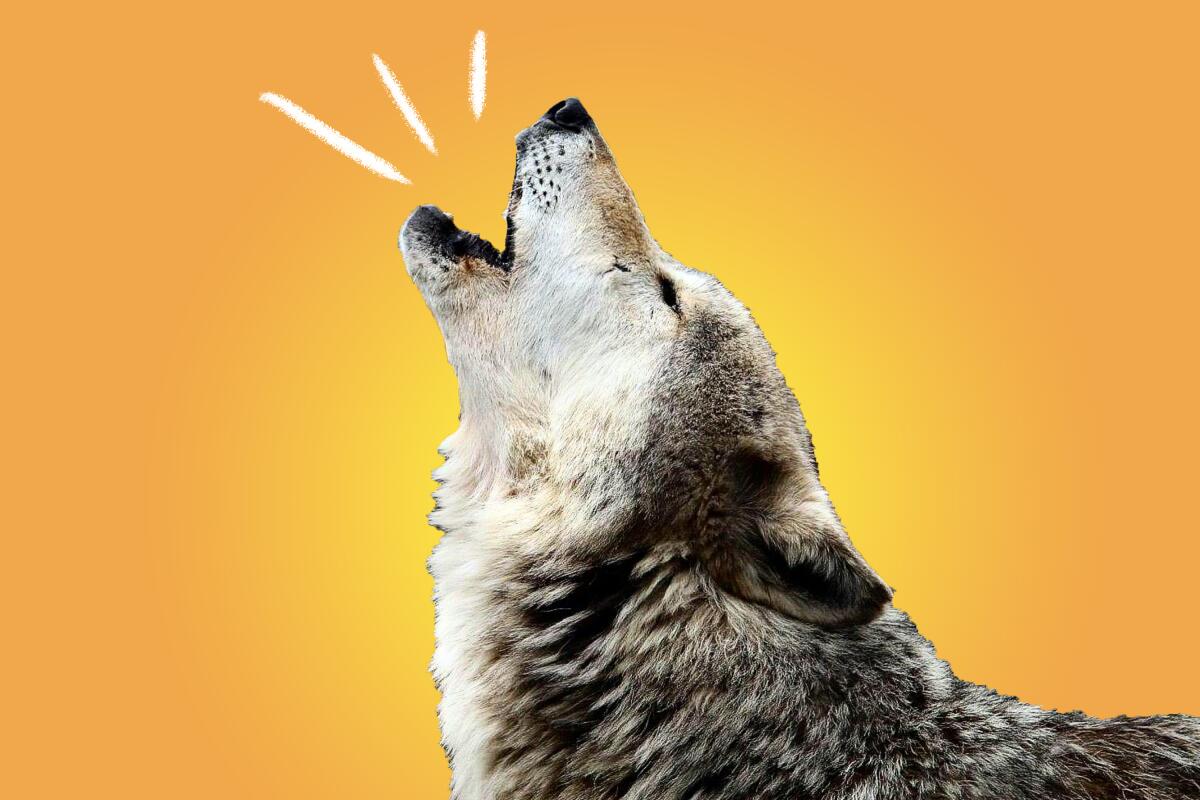
If you’ve never heard wolves howling, give a listen. The Wolf Conservation Center in South Salem, N.Y., posted this video with a note that says: “It starts with a trio and ends with a roar 50 wolves strong.”
Gray wolves, once prevalent in North America, will lose their protected status under a recent Trump administration decision. The U.S. Fish & Wildlife Service says the species is thriving in the wild and no longer needs to be on the endangered list. Wildlife groups disagree and plan to challenge the action. Read the full story here.
Cool gear

We’ve got 22 gift ideas for the outdoors lover on your holiday shopping list. Have a look at our L.A. Times Holiday Gift Guide for inspiration. One cool item from Huckberry: Whiskey Peaks hand-blown glasses. The magic of these glasses starts when you finish whatever is inside (and it doesn’t have to be whiskey). Staring at you from the bottom is a finely crafted 3-D replica of Mt. Whitney, the Grand Tetons, Half Dome or the Grand Canyon. They’re available in U.S. or international mountains. Peak-baggers will love these — for the drink and the memories.
The must-read
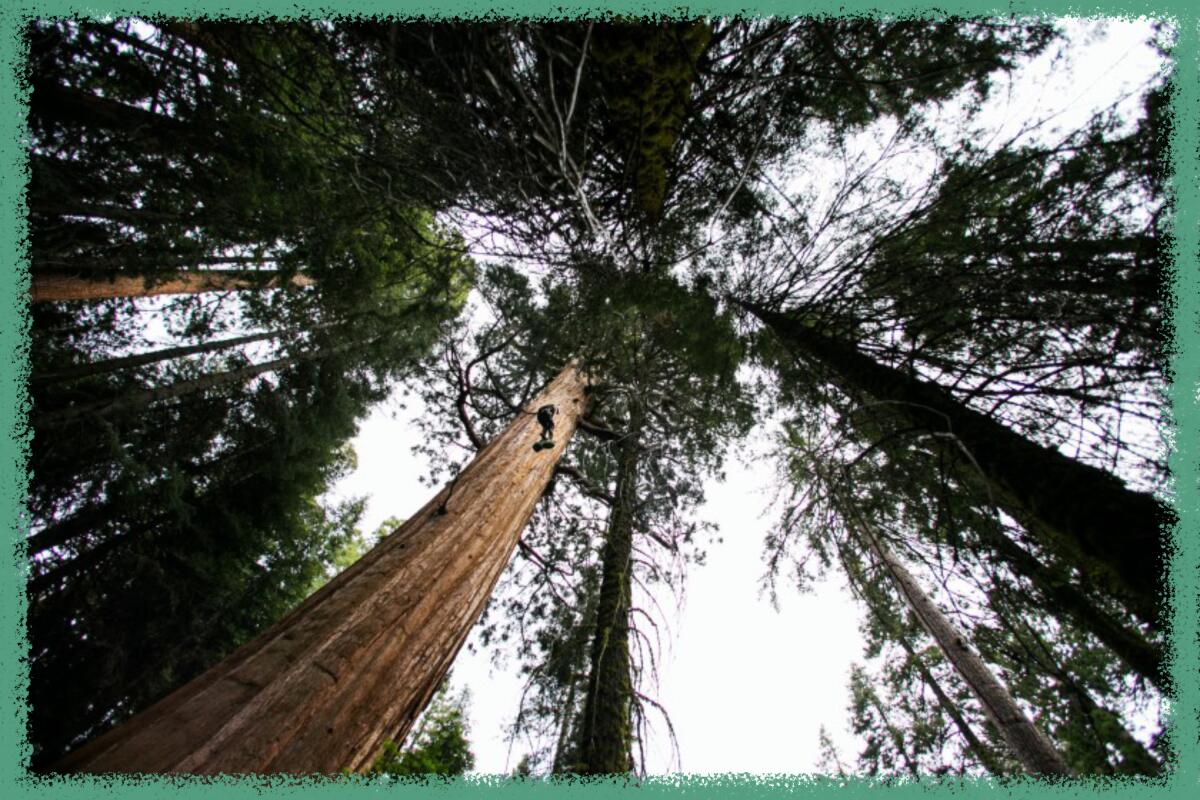
What are the woods without big trees? I breathed a short-sighted sigh of relief when the record fire season spared the redwoods at Big Basin Redwoods State Park near Santa Cruz. Turns out drought and fires — twin harbingers of climate change — may selectively change what trees we can expect to see in forests, deserts and cities.
In an op-ed, Jared Farmer tells us California’s leafy landscape wasn’t meant to last and envisions these changes: “L.A. will lose its ultra-tall palms; Joshua Tree National Park will lose most of its Joshuas; the Sierra will lose certain stands of sequoias. ... Every habitat has its tipping points. Californians of the future will envy our familiarity with big old trees.”
I’m not ready to say goodbye to “big old trees,” such as the sugar and Jeffrey pines I take for granted on hikes in local forests. Farmer tells us not to fret. Wildflowers and chaparral shrubs may fill the gap, and California in the next century will slowly emerge as “less coniferous and wooded, but still woody.” Read the full op-ed here.
Insider tip
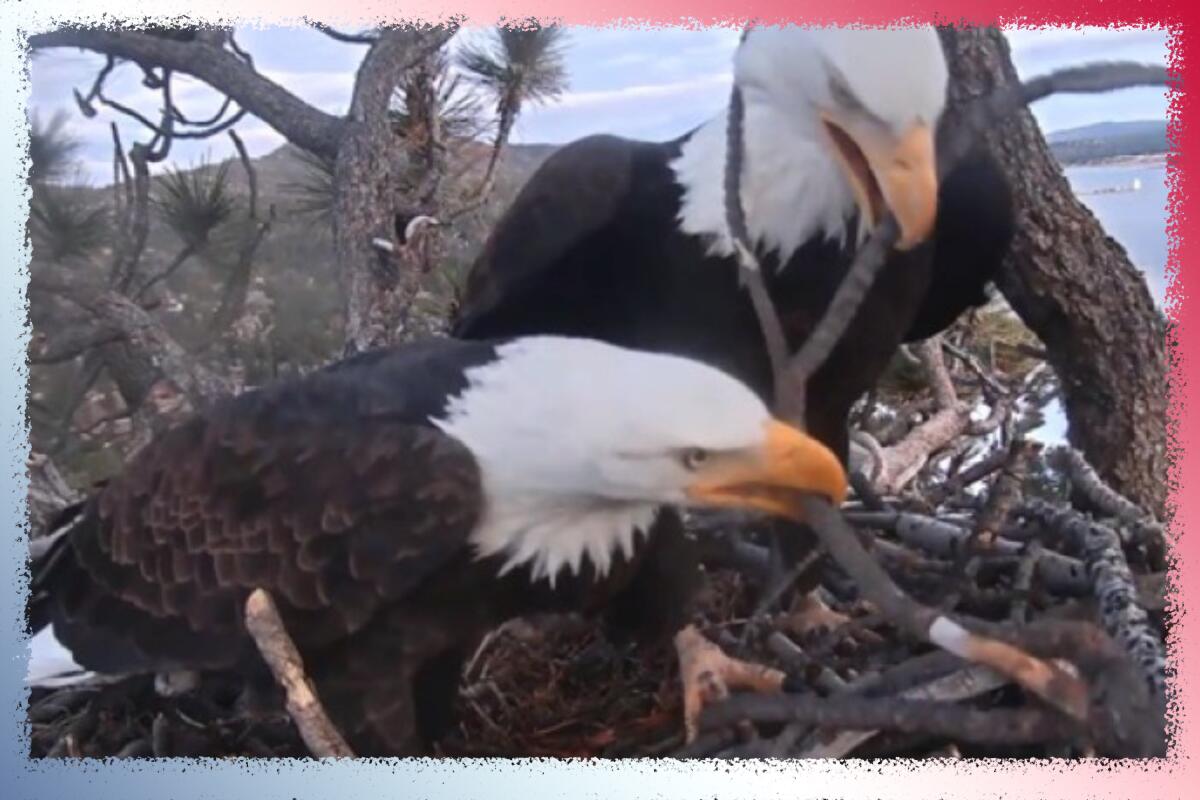
Keep your eyes open for migrating bald eagles, which usually start to arrive in the San Bernardino Mountains at the end of November. As many as 15 eagles make their temporary homes in Big Bear Lake, Lake Arrowhead, Lake Silverwood, Lake Perris and Lake Hemet. (The annual eagle count that was held for 40 years has ended, and not because of COVID-19. Counting birds isn’t necessary anymore because the population has stabilized at 12 to 15 birds, says the U.S. Forest Service.) The migrating eagles stay until mid-March or April.
Or you can stay home and watch rock star eagles Jackie and Shadow, who stay year-round. The Friends of Big Bear Valley’s webcam has been trained on a nest 24/7 since 2015. Anyone could see when eggs were laid, when they hatched and when little ones fledge. However, last year the eggs didn’t yield any chicks — a major downer for nest paparazzi everywhere. Here’s a link where you can start watching (it’s empty right now) or bookmark for later.
Send us your thoughts
Share anything that’s on your mind. The Wild is written for you and delivered to your inbox for free. Drop us a line at [email protected].
Click here to view the web version of this newsletter and share with others. I’m Mary Forgione and I write The Wild. I’ve been exploring trails and open spaces in Southern California for four decades.

Sign up for The Wild
We’ll help you find the best places to hike, bike and run, as well as the perfect silent spots for meditation and yoga.
You may occasionally receive promotional content from the Los Angeles Times.




